Jet Mixings of Alternating-Lobe Nozzles under Pumping Air Intake and Stamping Air Intake Conditions
Abstract
:1. Introduction
2. Geometrical Configurations
3. Numerical Simulation Method
4. Results and Discussion
4.1. Jet Mixing Performance
4.2. Jet Mixing Mechanisms
5. Conclusions
Author Contributions
Funding
Data Availability Statement
Conflicts of Interest
Abbreviations
| CoALN | Coplanar alternating-lobe nozzle |
| ScALN | Scarfing alternating-lobe nozzle |
| SwALN | Sword alternating-lobe nozzle |
| SwChALN | Sword and chevron alternating-lobe nozzle |
| NLN | Normal lobed nozzle |
| d | Equivalent diameter of the exit of CoALN [mm] |
| D | Diameter of the mixing tube [mm] |
| x | Axial distance measured from the trailing edge of the CoALN [mm] |
| mh | Mass flux of the hot stream [kg/s] |
| mc | Mass flux of the cool stream [kg/s] |
| mm | Mass flux of the local mixing stream [kg/s] |
| Th | Temperature of the hot stream [K] |
| Tc | Temperature of the cool stream [K] |
| Tm | Temperature of the local mixing stream [K] |
| TM | Temperature after complete mixing of the hot and cool streams [K] |
| Total pressure of the hot stream [Pa] | |
| Total pressure of the cool stream [Pa] | |
| Total pressure of the local mixing stream [Pa] | |
| Φ | Mass flux ratio |
| ηtr | Thermal mixing efficiency |
| σ | Total pressure recovery coefficient |
References
- Khan, A.; Akram, S.; Kumar, R. Experimental study on enhancement of supersonic twin-jet mixing by vortex generators. Aerosp. Sci. Technol. 2020, 96, 105521. [Google Scholar] [CrossRef]
- Singh, L.; Singh, S.N.; Sinha, S.S. Effect of Reynolds number and slot guidance on passive infrared suppression device. Aerosp. Sci. Technol. 2020, 99, 105732. [Google Scholar] [CrossRef]
- Zhou, Z.Y.; Huang, J. Mixed design of radar/infrared stealth for advanced fighter intake and exhaust system. Aerosp. Sci. Technol. 2021, 110, 106490. [Google Scholar] [CrossRef]
- Chen, H.Y.; Cai, C.P.; Jiang, S.B.; Zhang, H. Numerical modeling on installed performance of turbofan engine with inlet ejector. Aerosp. Sci. Technol. 2021, 112, 106590. [Google Scholar] [CrossRef]
- Mirjalily, S.A.A. Lambda shock behaviors of elliptic supersonic jets; a numerical analysis with modification of RANS turbulence model. Aerosp. Sci. Technol. 2021, 112, 106613. [Google Scholar] [CrossRef]
- Zhou, Z.Y.; Huang, J.; Yi, M.X. Comprehensive optimization of aerodynamic noise and radar stealth for helicopter rotor based on Pareto solution. Aerosp. Sci. Technol. 2018, 82–83, 607–619. [Google Scholar] [CrossRef]
- Zhou, Z.Y.; Huang, J.; Wu, N.N. Acoustic and radar integrated stealth design for ducted tail rotor based on comprehensive optimization method. Aerosp. Sci. Technol. 2019, 92, 244–257. [Google Scholar] [CrossRef]
- Zhou, Z.Y.; Huang, J.; Wang, J.J. Radar/infrared integrated stealth optimization design of helicopter engine intake and exhaust system. Aerosp. Sci. Technol. 2019, 95, 105483. [Google Scholar] [CrossRef]
- Zhou, Z.Y.; Huang, J.; Wang, J.J. Compound helicopter multi-rotor dynamic radar cross section response analysis. Aerosp. Sci. Technol. 2020, 105, 106047. [Google Scholar] [CrossRef]
- Shan, Y.; Zhang, J.Z.; Pan, C.X. Numerical and experimental investigation of infrared radiation characteristics of a turbofan engine exhaust system with film cooling central body. Aerosp. Sci. Technol. 2013, 28, 281–288. [Google Scholar] [CrossRef]
- Cheng, W.; Wang, Z.X.; Zhou, L.; Sun, X.; Shi, J. Influences of shield ratio on the infrared signature of serpentine nozzle. Aerosp. Sci. Technol. 2017, 71, 299–311. [Google Scholar] [CrossRef]
- Cheng, W.; Wang, Z.X.; Zhou, L.; Shi, J.; Sun, X. Infrared signature of serpentine nozzle with engine swirl. Aerosp. Sci. Technol. 2019, 86, 794–804. [Google Scholar] [CrossRef]
- Williams, N.J.; Moeller, T.M.; Thompson, R.J. Numerical simulations of high frequency transverse pulsed jet injection into a supersonic crossflow. Aerosp. Sci. Technol. 2020, 103, 105908. [Google Scholar] [CrossRef]
- Santana, E.R.; Weigand, B. Effect of the reaction mechanism on the numerical prediction of the performance of a scramjet combustor at cruise flight 8 Mach number. Aerosp. Sci. Technol. 2021, 112, 106595. [Google Scholar] [CrossRef]
- Wright, A.; Lei, Z.J.; Mahallati, A.; Cunningham, M.; Militzer, J. Effects of scalloping on the mixing mechanisms of forced mixers with highly swirling core flow. J. Eng. Gas Turb. Power 2013, 135, 071202. [Google Scholar] [CrossRef]
- Lei, Z.J.; Zhang, Y.F.; Zhu, Z.H.; Zhu, J. Numerical research on the mixing mechanism of lobed mixer with inlet swirl in linear radial distribution. Proc. IMechE. A J. Power Energy 2015, 229, 280–297. [Google Scholar] [CrossRef]
- Shan, Y.; Zhang, J.Z. Numerical investigation of flow mixture enhancement and infrared radiation shield by lobed forced mixer. Appl. Therm. Eng. 2009, 29, 3687–3695. [Google Scholar] [CrossRef]
- Lei, Z.J.; Mahallati, A.; Cunningham, M.; Germain, P. Effects of core flow swirl on the flow characteristics of a scalloped forced mixer. J. Eng. Gas Turb. Power 2012, 134, 111201. [Google Scholar] [CrossRef]
- Du, L.W.; Liu, Y.H.; Li, T. Numerical predictions of scarfing on performance of S-shaped nozzle with asymmetric lobe. J. Propul. Power 2015, 31, 604–618. [Google Scholar] [CrossRef]
- Shan, Y.; Zhang, J.Z.; Huang, G.P. Experimental and numerical studies on lobed ejector exhaust system for micro turbojet engine. Eng. Appl. Comp. Fluid 2011, 5, 141–148. [Google Scholar] [CrossRef]
- Liu, Y.H. Experimental and numerical research on high pumping performance mechanism of lobed exhauster-ejector mixer. Int. Commun. Heat Mass Transfer. 2007, 34, 197–209. [Google Scholar] [CrossRef]
- Pan, C.X.; Zhang, J.Z.; Shan, Y. Effects of exhaust temperature on helicopter infrared signature. Appl. Therm. Eng. 2013, 51, 529–538. [Google Scholar]
- Pan, C.X.; Zhang, J.Z.; Ren, L.F.; Shan, Y. Effects of rotor downwash on exhaust plume flow and helicopter infrared signature. Appl. Therm. Eng. 2014, 65, 135–149. [Google Scholar] [CrossRef]
- Zhang, J.Z.; Pan, C.X.; Shan, Y. Progress in helicopter infrared signature suppression. Chin. J. Aeronaut. 2014, 27, 189–199. [Google Scholar] [CrossRef] [Green Version]
- Liu, Y.H. Experimental and numerical investigation of circularly lobed nozzle with/without central plug. Int. J. Heat Mass Transf. 2002, 45, 2577–2585. [Google Scholar] [CrossRef]
- Koutmos, P.; McGuirk, J.J. Velocity and turbulence characteristics of isothermal lobed mixer flows. J. Fluids Eng. 1995, 117, 633–638. [Google Scholar] [CrossRef]
- Presz, W.M., Jr.; Reynolds, G. Alternating Lobed Mixer/Ejector Concept Suppressor. U.S. Patent No. 5884472, 23 March 1999. [Google Scholar]
- Yang, Z.Y.; Zhang, J.Z.; Shan, Y. Research on the influence of integrated infrared suppressor exhaust angle on exhaust plume and helicopter infrared radiation. Aerosp. Sci. Technol. 2021, 118, 107013. [Google Scholar] [CrossRef]
- Sheng, Z.Q.; Chen, S.C.; Wu, Z.; Huang, P. High mixing effectiveness lobed nozzles and mixing mechanisms. Sci. China Technol. Sci. 2015, 58, 1218–1233. [Google Scholar] [CrossRef]
- Sheng, Z.Q.; Huang, P.L.; Zhao, T. Configurations of lobed nozzles for high mixing effectiveness. Int. J. Heat Mass Tran. 2015, 91, 671–683. [Google Scholar] [CrossRef]
- Sheng, Z.Q. Jet mixing of lobed nozzles with spoilers located at lobe peaks. Appl. Therm. Eng. 2017, 119, 165–175. [Google Scholar] [CrossRef]
- Sheng, Z.Q.; Wu, Z.; Ji, J.Z.; Huang, P.L. Chevron spoiler to improve the performance of lobed ejector/mixer. Int. Commun. Heat Mass Tran. 2016, 77, 174–182. [Google Scholar] [CrossRef]
- Sheng, Z.Q.; Zhang, L.; Dan, Y.; Wang, Y.Y. Configuration of the lobed nozzle in an ejector mixer for extreme mixing efficiency. Int. J. Heat Mass Tran. 2022, 183, 122102. [Google Scholar] [CrossRef]
- Sheng, Z.Q.; Liu, J.Y.; Yao, Y.; Xu, Y.H. Mechanisms of lobed jet mixing: About circularly alternating-lobe mixers. Aerosp. Sci. Technol. 2020, 98, 105660. [Google Scholar] [CrossRef]
- Sheng, Z.Q.; Yao, Y.; Xu, Y.H. Suggestions on investigations of lobed jet mixing. Aerosp. Sci. Technol. 2019, 86, 415–429. [Google Scholar] [CrossRef]
- Hu, H.; Saga, T.; Kobayashi, T. Dual-plane stereoscopic PIV measurements in a lobed jet mixing flow. In Proceedings of the 43rd AIAA Aerospace Sciences Meeting and Exhibit, Reno, Nevada, USA, 10–13 January 2005. AIAA Paper 2005-0443. [Google Scholar]
- Xie, Y.; Liu, Y.H. A modified thermal mixing efficiency and its application to lobed mixer nozzle for aero-engines. Heat Transf. Res. 2011, 42, 317–335. [Google Scholar] [CrossRef]
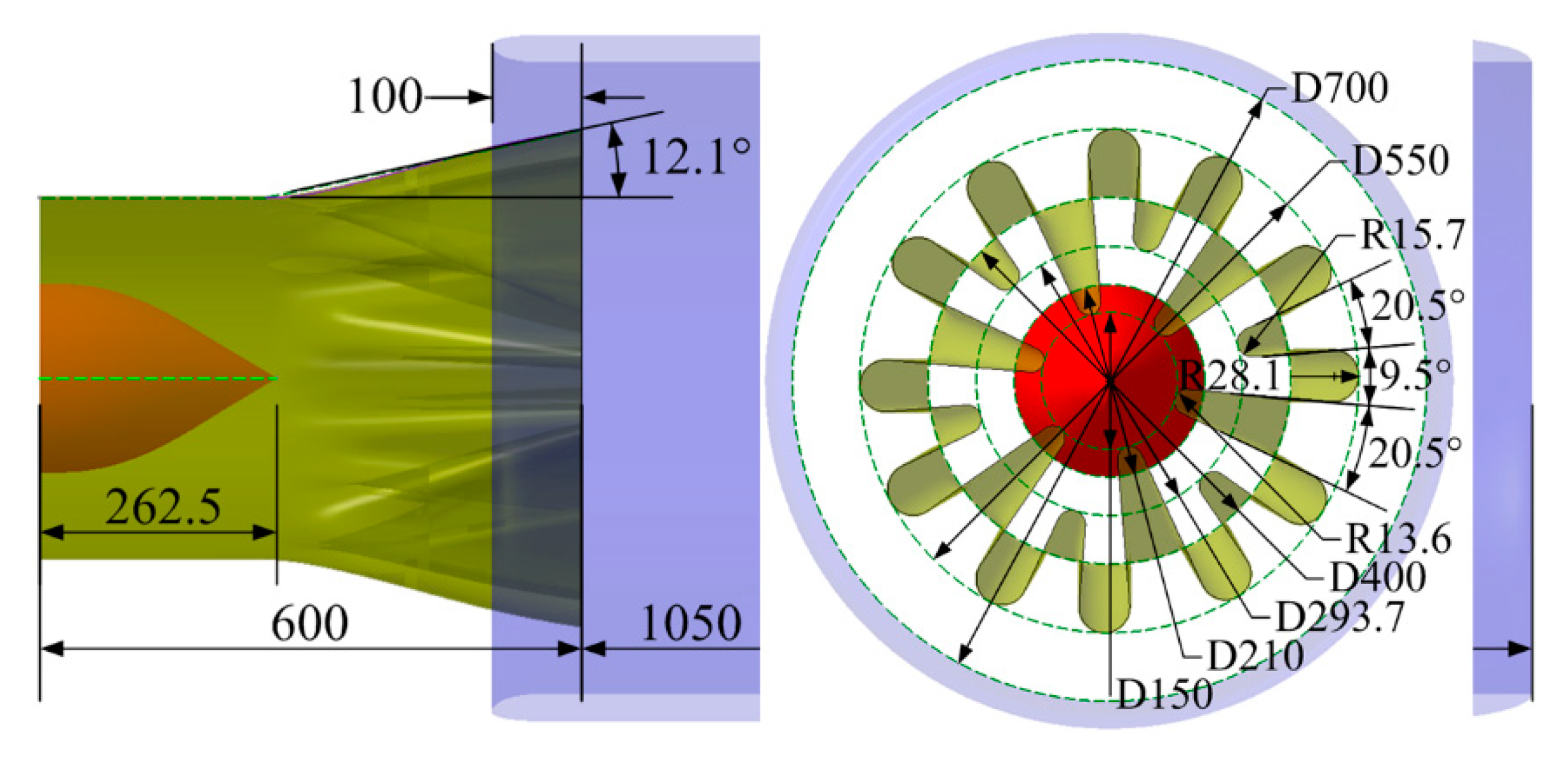


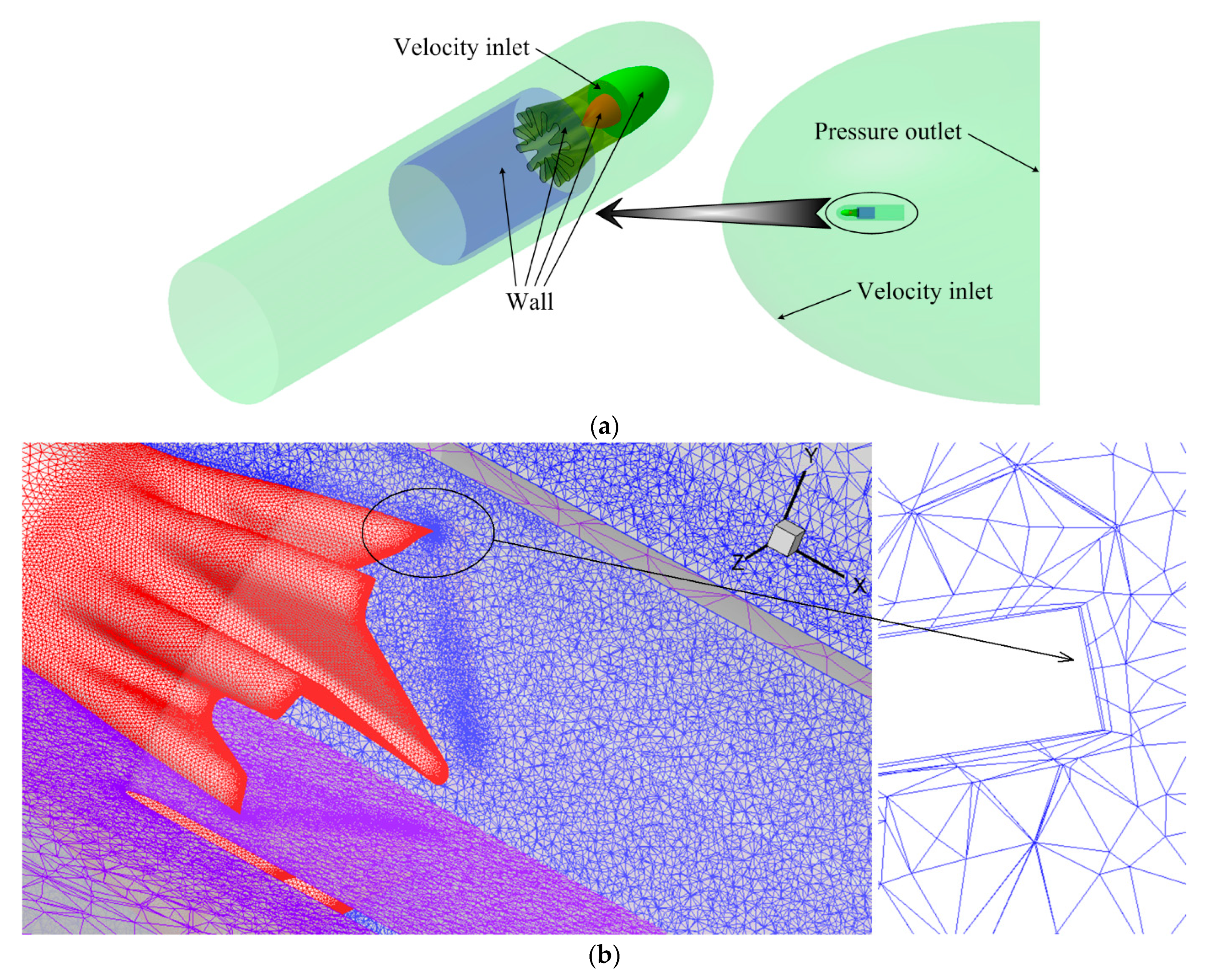
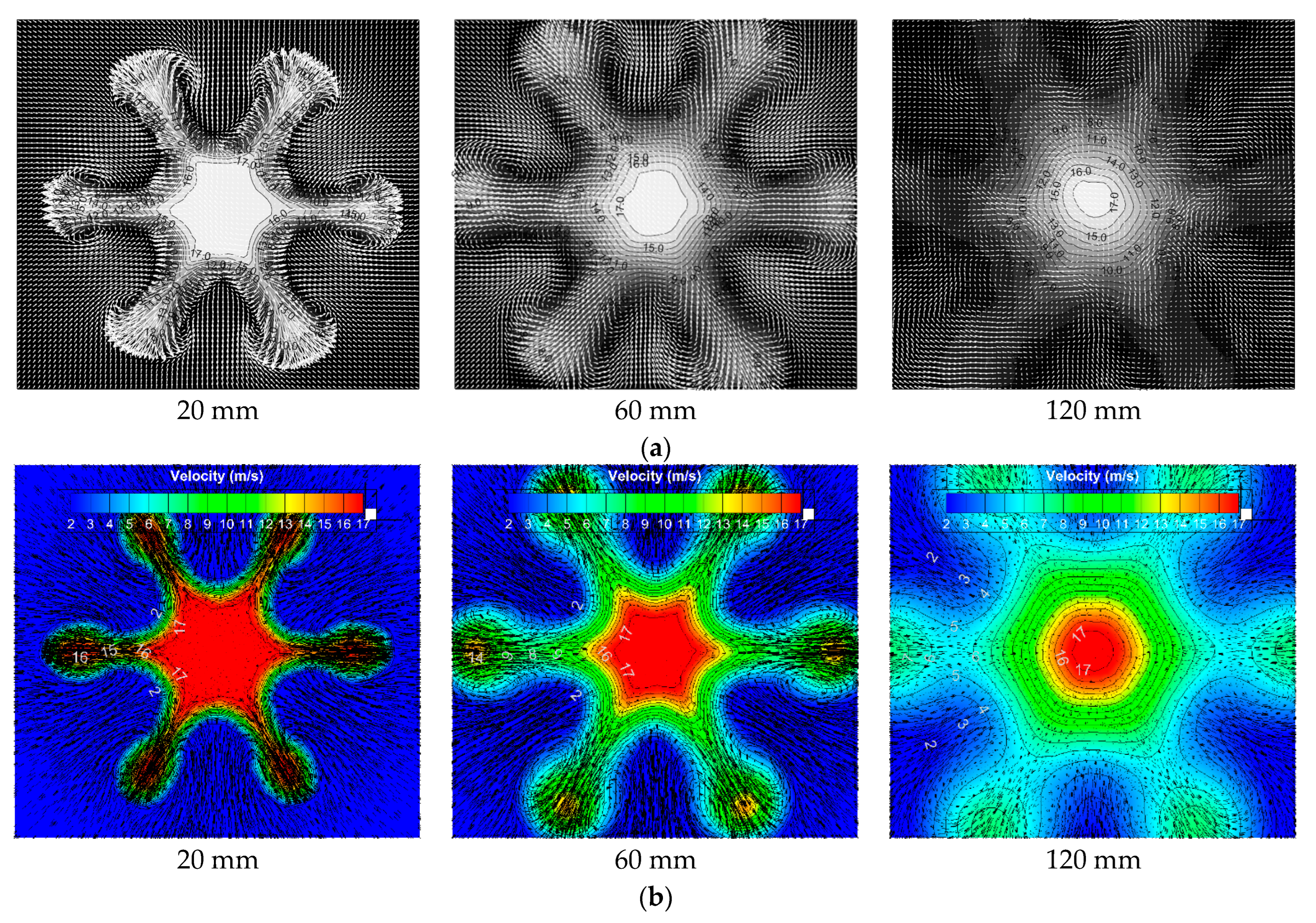
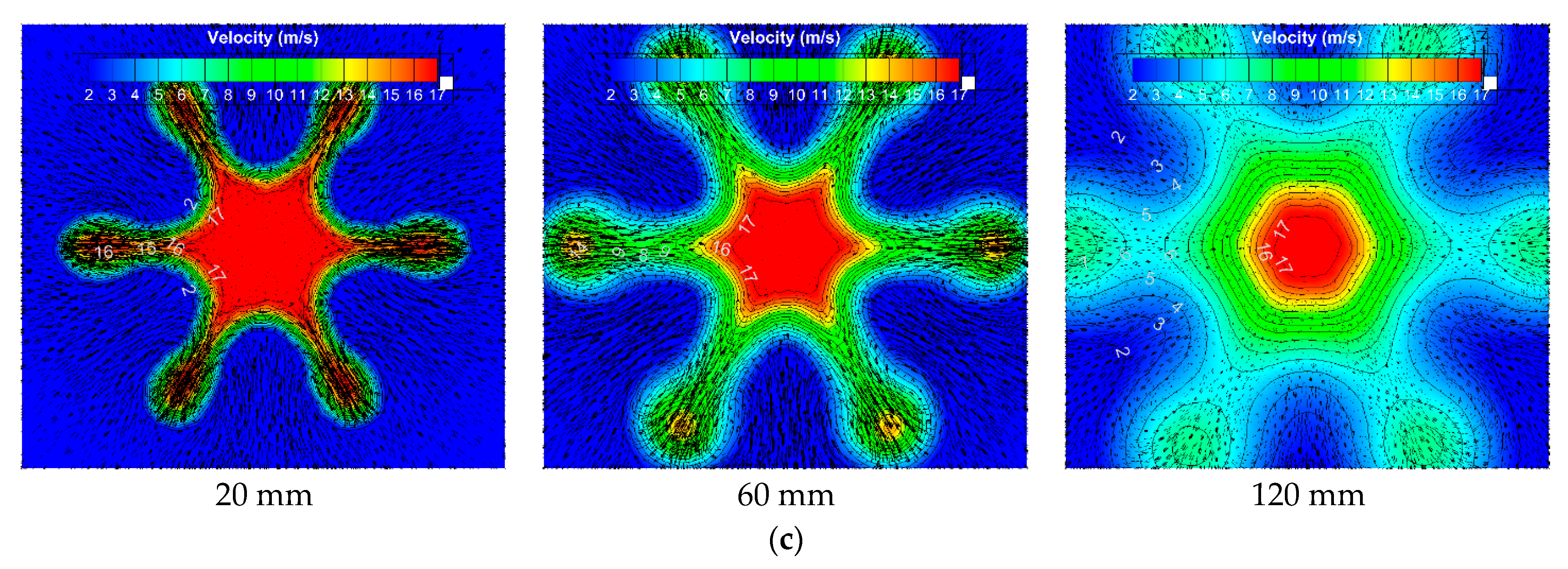

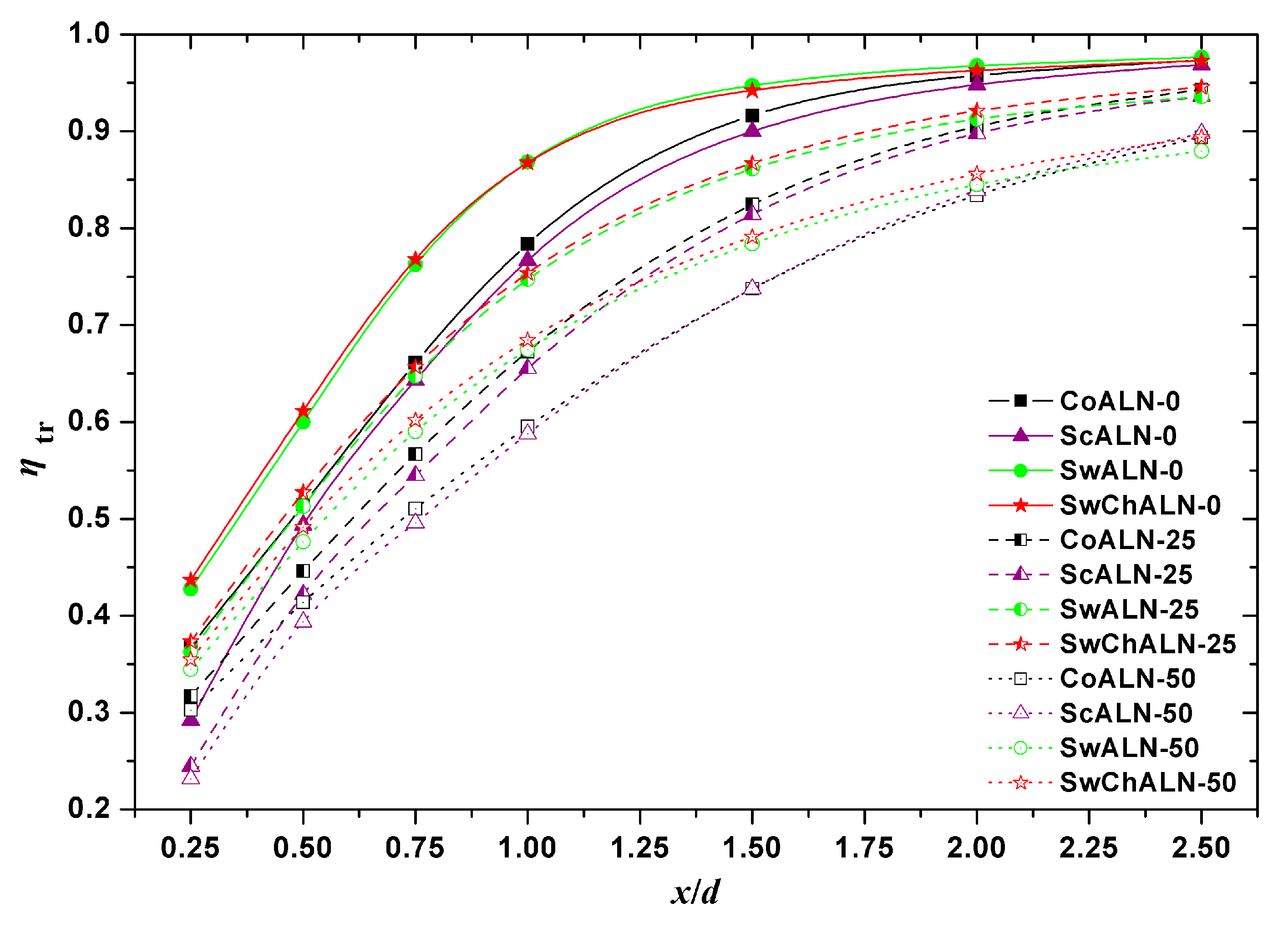
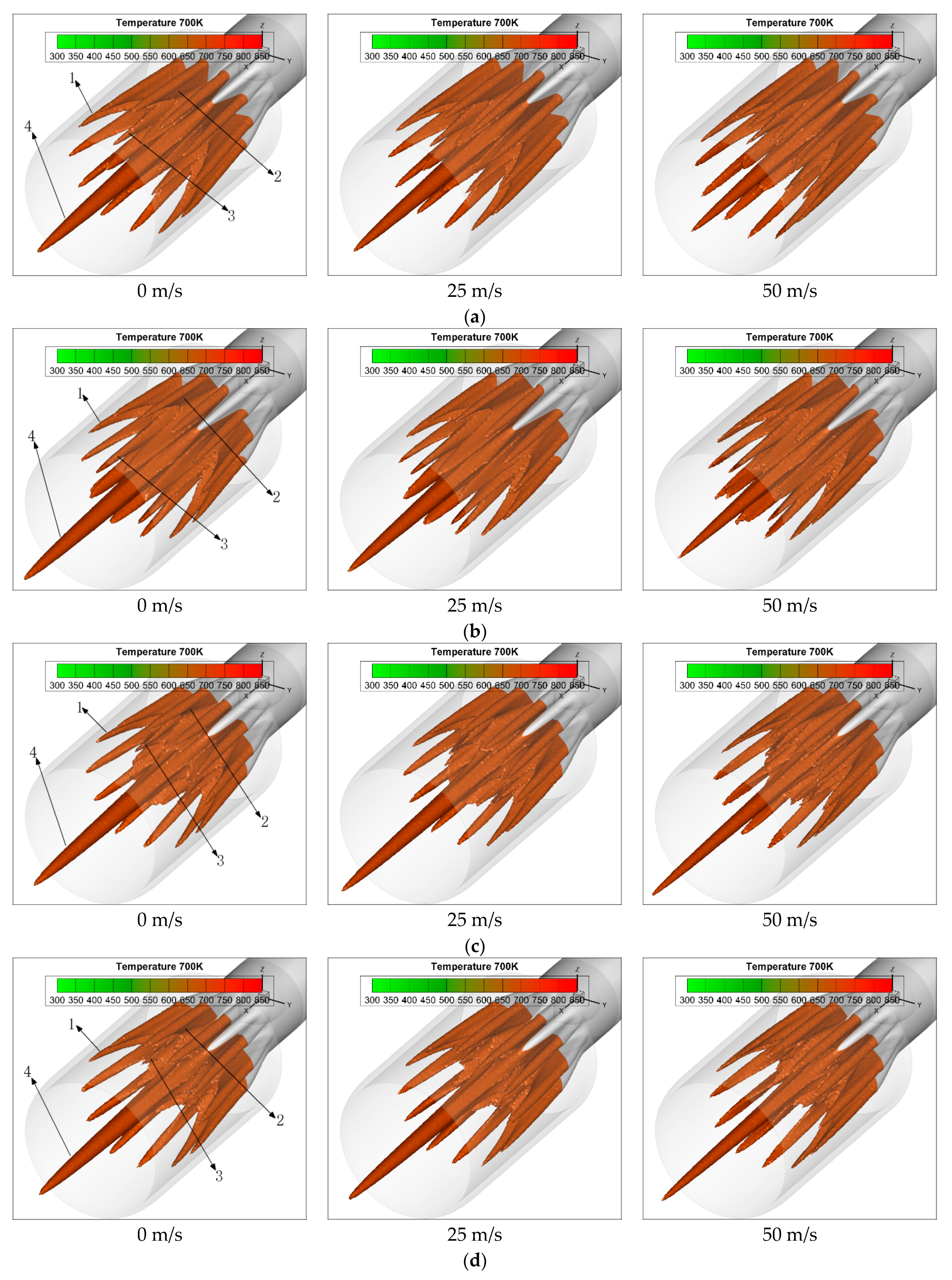


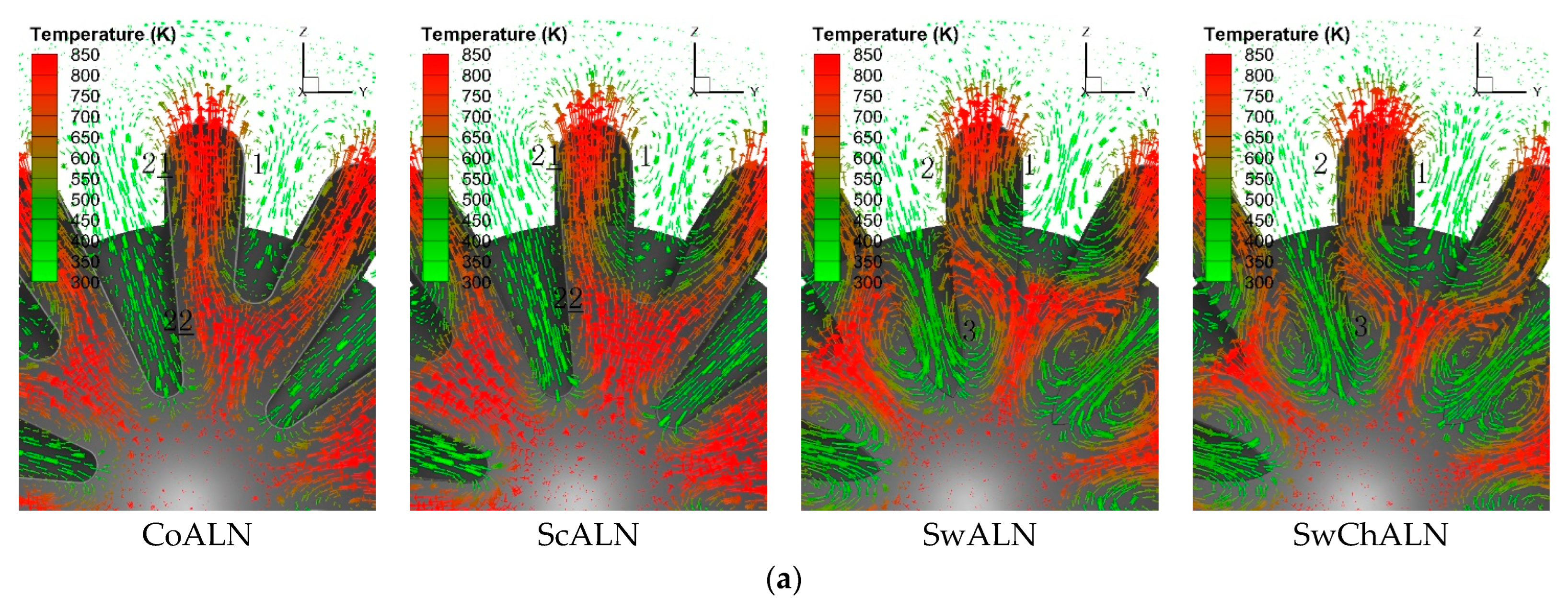

| CoALN -0 | ScALN -0 | Sw ALN -0 | SwCh ALN -0 | Co ALN -25 | Sc ALN -25 | Sw ALN -25 | SwCh ALN -25 | Co ALN -50 | Sc ALN -50 | Sw ALN -50 | SwCh ALN -50 | |
|---|---|---|---|---|---|---|---|---|---|---|---|---|
| Φ | 1.0909 | 1.1098 | 1.1277 | 1.1507 | 1.5961 | 1.6066 | 1.6189 | 1.6506 | 2.6225 | 2.6398 | 2.6387 | 2.6582 |
Publisher’s Note: MDPI stays neutral with regard to jurisdictional claims in published maps and institutional affiliations. |
© 2022 by the authors. Licensee MDPI, Basel, Switzerland. This article is an open access article distributed under the terms and conditions of the Creative Commons Attribution (CC BY) license (https://creativecommons.org/licenses/by/4.0/).
Share and Cite
Sheng, Z.; Dan, Y.; Zhang, L.; Zhong, B. Jet Mixings of Alternating-Lobe Nozzles under Pumping Air Intake and Stamping Air Intake Conditions. Aerospace 2022, 9, 700. https://doi.org/10.3390/aerospace9110700
Sheng Z, Dan Y, Zhang L, Zhong B. Jet Mixings of Alternating-Lobe Nozzles under Pumping Air Intake and Stamping Air Intake Conditions. Aerospace. 2022; 9(11):700. https://doi.org/10.3390/aerospace9110700
Chicago/Turabian StyleSheng, Zhiqiang, Yu Dan, Lan Zhang, and Bowen Zhong. 2022. "Jet Mixings of Alternating-Lobe Nozzles under Pumping Air Intake and Stamping Air Intake Conditions" Aerospace 9, no. 11: 700. https://doi.org/10.3390/aerospace9110700
APA StyleSheng, Z., Dan, Y., Zhang, L., & Zhong, B. (2022). Jet Mixings of Alternating-Lobe Nozzles under Pumping Air Intake and Stamping Air Intake Conditions. Aerospace, 9(11), 700. https://doi.org/10.3390/aerospace9110700






